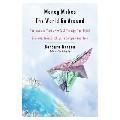內容簡介
Many of us consider ourselves fairly knowledgeable about stock and fund investment options, but then maintain some sort of vague money-in-a-sock vision of the money we deposit in our bank accounts. While the notion that it physically sits in the bank's drawers is obviously ludicrous, determining what actually happens to the money seems impossible in our age of split-second electronic transfers and a complicated global economy. In Money Makes the World Go Round however, Barbara Garson has done just that, tracking a one-time deposit on its dizzying journey around the world.
Using half her publisher's advance for this book, Garson deposits $29,500 in a small, family-owned bank in Millbrook, New York. Putting her intrepid journalistic sensibilities to work, Garson then attempts to follow the money as it's put to use, flowing out of her small bank, through much larger ones, and in and out of the accounts and pockets of companies and their employees in the U.S. and Asia. She tracks down players on all levels of this green path--from a senior vice president on Chase's Federal Funds desk to a seafood importer in Brooklyn, and from the head honcho of a Japanese construction firm building an oil refinery in Thailand to a jellyfish exporter in Malaysia--and tells their stories in vivid, colorful detail. Doing more than just stating that the lives of many are affected by the actions of a few, Garson interviews people at the farthest reaches of her money's journey, like fishermen in a small Malay village, a Burmese pipe fitter working illegally in Thailand, and Filipino maids in Singapore. She explores the consequences of a mutual fund investment in a similar manner, taking one of the fund's investments, Sunbeam, and following "Chainsaw Al" Dunlop's restructuring of the company from the top (shareholders) to the bottom (workers at a furniture plant in Tennessee).
Garson, author of All the Livelong Day and The Electronic Sweatshop, is a lively and engaging writer. She appears to hold little interest in the value of her deposit for herself, but is oozing with curiosity about what money can and can't do for its lenders, borrowers, makers, and users around the world. While she tends to go into excruciating detail in relaying the circuitous routes she takes to get to the right people and the conversations she has with them (even recording the phone conversations they have while she is with them), this very detail serves to remind the reader of the convoluted pathways down which her money travels. An intriguing narrative on a subject we usually only think of in numbers. --S. Ketchum

